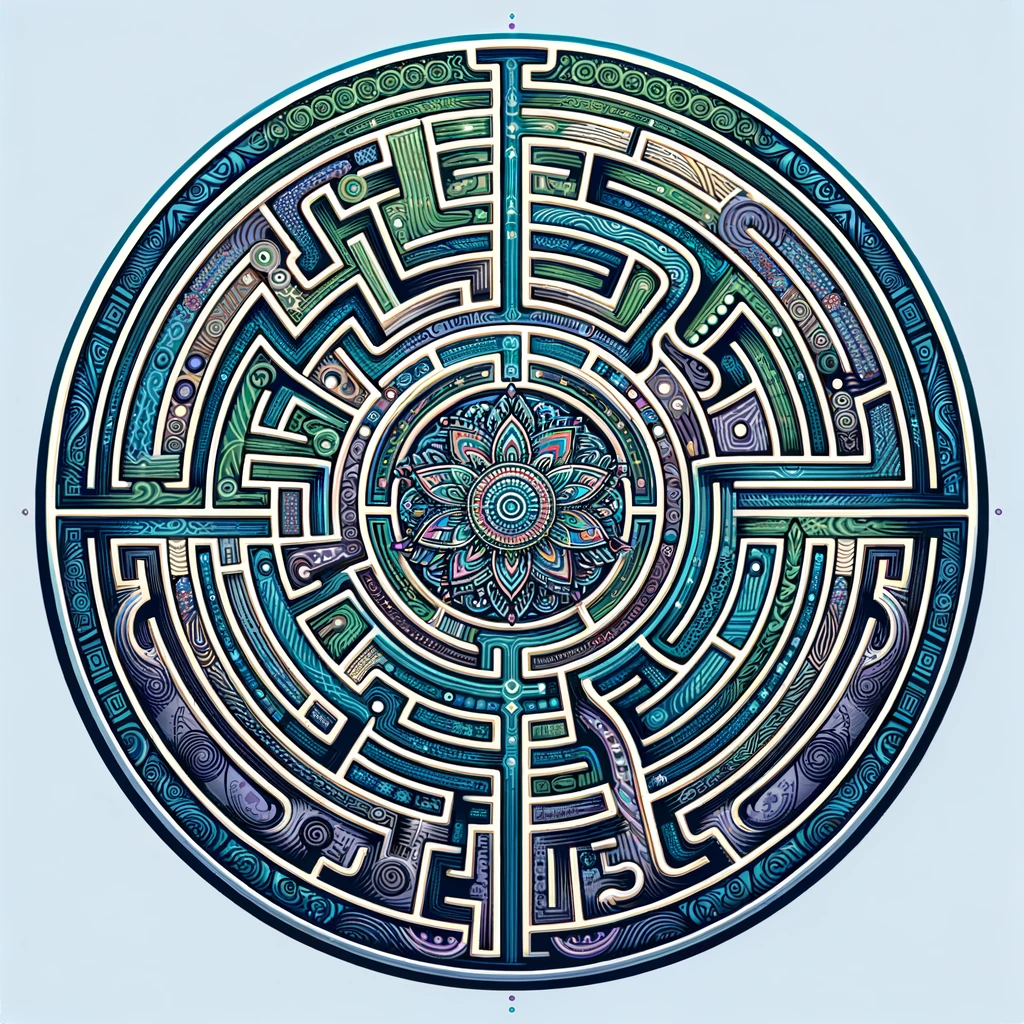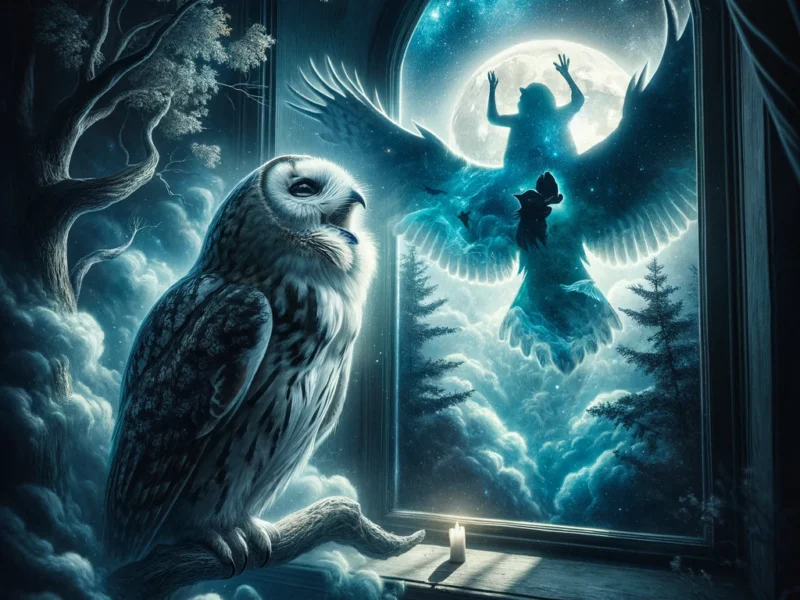Spirals are a common motif with symbolic significance across various spiritual traditions and cultures. These hypnotic shapes hold deep meaning, representing concepts like the soul's journey, the interconnectedness of existence, and the repeating cycles of creation. By exploring the use of spirals in spiritual symbolism, art, architecture, and practices, we can uncover a deeper understanding of our inner selves and place within the great mysteries of the universe.
Key Takeaways About Spirals in Spirituality
- Spirals represent universal concepts like growth, breath and consciousness expanding outward, as well as the soul's journey inward towards the divine center.
- They embody the fluid interplay of opposing energies in harmony - the balance between centrifugal and centripetal pulls.
- Spirals symbolize core elements of timeless wisdom traditions from Celtic triskeles to Hindu mandalas to Mesoamerican calendars, encoding a recognition of cyclical return.
- Sacred architecture and art the world over integrate multi-layered spiral motifs reflecting esoteric mysteries.
- Many spiritual practices consciously incorporate spirals through dance, breathwork and meditation to facilitate mind-body-soul integration and healing.
- As a visual symbol, spirals serve as portals stimulating expanded mystical awareness by riveting attention onto infinity. They focus as well as liberate perception.
Through mindful understanding of the spiral, we trace a profound master pattern that teaches the art of equilibrium along the soul's boutique passage while catching glimmers of vast unity pulsing. This reminds us we journey together along undulating currents that continually cycle externals back to the vibrant heart essence within all.
What is the Significance of Spirals in Spirituality?

Spirals and labyrinthine coils can be found adorning spiritual art and architecture around the world, from the intricate patterns of Celtic stone carvings to the spiral motifs in Hindu and Buddhist mandalas. These captivating shapes echo the twists and turns of life's path, embodying both the inward and outward journey of the soul.
On a fundamental level, spirals symbolize energy, growth, evolution and the continual process of expansion. As we travel along the coils, we are filled with a sense of forward momentum. At the same time, there is harmony represented in the balance of opposing pulls - the spaces in between contract inward even as the spiral unfolds outward.
In many spiritual traditions, this interplay of energy also parallels the repeating cycles of death and rebirth. Nature herself unfurls according to spiral patterns, elegantly demonstrated in the chambered nautilus shell where each new ring matures from the nutrients of ones come before.
So as we move through the arcs and rounds of spirals, it can serve as a metaphor for both the soul’s development across lifetimes as well as our continual growth within this one precious human life. The spiral reminds us that no matter where we stand today, there is always more to learn and discover on the path ahead.
Symbolic Meanings Explored
Let's take a closer look at some of the key symbolic meanings and qualities associated with spirals from spiritual perspectives:
The Spiral as a Symbol of Eternal Return
A spiral coil has no clear beginning or end, representing infinity, unity and the timeless nature of the soul. Many cultures identified the Sun's nourishing and life-giving rays with the shape of spirals - the ancient Swastika symbol, for example, depicted the Sun's movement across the sky over a year’s time.
Similarly in Norse mythology, the divination tool “Vegvisir” took the form of an eight-spoked spiral meant to guide the bearer through all trials. It echoed the view that time repeats itself in cycles, and we each have countless chances for renewal.
The Spiral as a Symbol of Balance
The path of the spiral beautifully demonstrates equilibrium through its opposing motions. As it arcs outward, the spiral also turns inward in a balanced interplay of centrifugal and centripetal forces.
In the yin-yang philosophy, this also mirrors the balance of divine feminine and masculine energies. And in spiritual alchemy practices, it represented the synthesis of opposites into transcendent unity.
Practices like walking a labyrinth trace this delicate equilibrium in motion - as we journey through each winding turn, it brings us to stillness at the center. This remains an enlightening blueprint for discovering harmony along life’s twisting turns.
The Spiral as a Symbol of Growth and Expanding Consciousness
As a shape that expands perpetually from its core, spirals serve as apt symbols of inner purification and growth.
When we model this form with sacred dance or embody it through fluid asana postures in yoga, the movements open energy channels and loosen knots within us. Through these sequences, our limited thoughts unwind to access expanded states of freedom and bliss.
Over time and devoted practice, we gain access to wider vistas of our own being. Every coil added takes us farther along the path of self-realization.
“As we unroll the magic carpets of our existence, we discover anew that the path winds inward and outward, infinitely...” - Jay Woodman
This dynamic also applies to our understanding of the cosmos at large. Like a portal offering an inward glimpse, sacred art and architecture infused the spiral form with multi-layered meaning.
The inward turn represents reflection and introspection, allowing us to dive deep into mysteries of the self. The outward arcs then unveil the manifest pluralities of our world while hinting at infinities yet unknown. As above, so below.
Additional Examples of Spiral Symbolism:
- Kundalini - The coiled serpent symbolizing latent spiritual power to be awakened within each being. As Shakti energy rises through the spine it opens energy centers of awakening.
- Caduceus - The staff entwined by two snakes or winding paths. A symbol of healing, balance and psychic integration. Assists in resolving polarities.
- Triskele - Triple spiral motif found in many Celtic symbols and sacred imagery, representing the triple nature of reality - Body, Mind and Spirit.
- Uroboros - The ancient alchemy image of a snake eating its own tail, symbolizing the cycle of life's endless renewal.
- Labyrinth - Winding unicursal path representing the soul's journey. Allows safe passage through inner worlds.
- Seed of Life - Circles radiating from a central point, reflecting the genesis state. Serves as a template from which forms manifest.
- Fibonacci Sequence - Mathematical pattern underlying natural growth and form. Each number equals the sum of previous two.
- Golden Ratio Phi - Decimal ratio found throughout life and nature, reflecting most harmonious proportion. Innately beautiful to human senses.
- Platonic Solids - The five perfect geometric forms, each one contained within the next to form the blueprint for manifest creation.
- Flower of Life - Ancient sacred geometry symbol of intersecting circles expanding outward. Represents the seed blueprint of the universe at all levels.
Spirals in Spiritual Traditions and Belief Systems
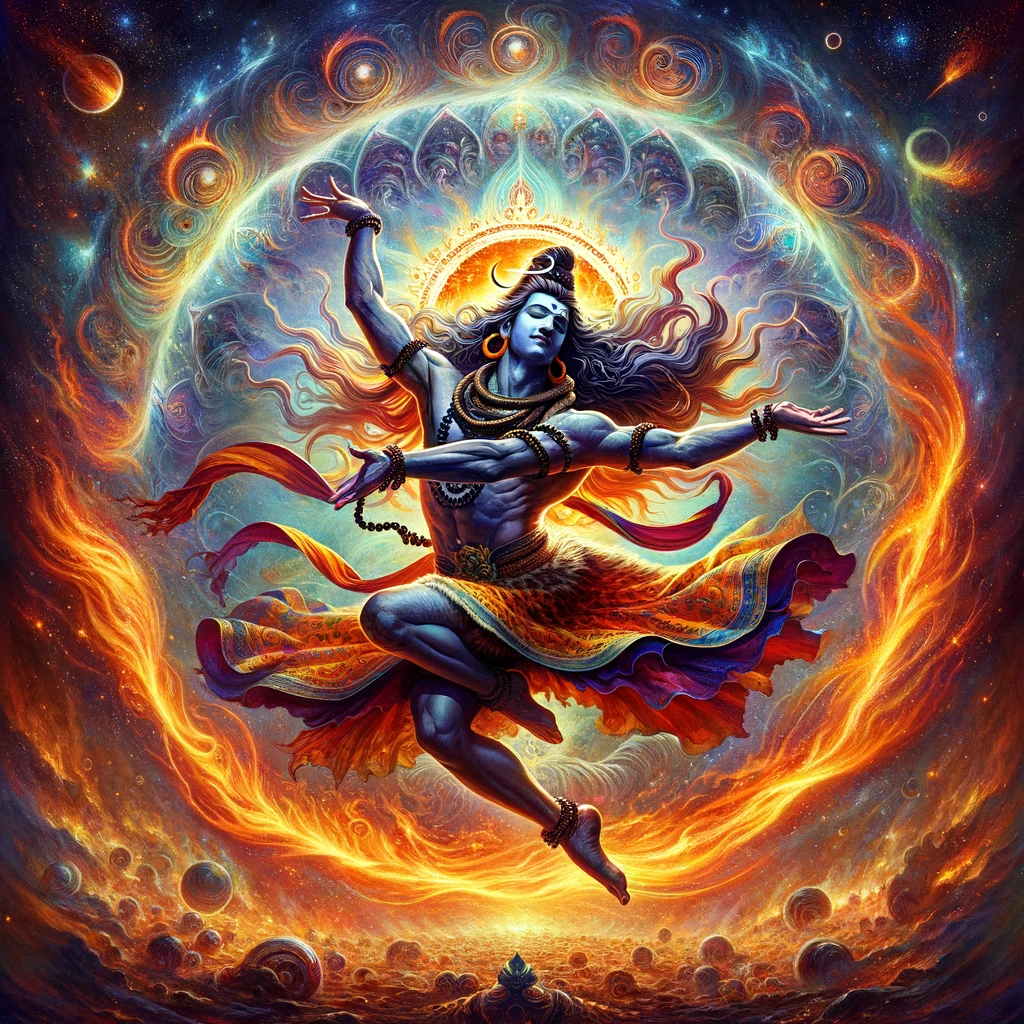
The enigmatic spiral shape appears meaningfully across the spiritual terrain in diverse cultures worldwide. Let's explore some examples:
Spiral Symbolism in Hindu Traditions
In Hindu iconography, the dancing lord Shiva is often depicted within a circle of flames. This signifies his ecstatic rhythm driving the cycles of creation and destruction perpetually forward. His cosmic dance echoes the spiral form, with centrifugal motions casting off illusions while centripetal turns draw consciousness within.
Lord Vishnu, too, reclines on the primordial waters along the coils of the serpent Adisesha - representing infinite time. His navel center mystically births the lotus of creation that houses god Brahma, who dreams up the forms of existence.
So too, spirals symbolize the kundalini Shakti energy - shown as the coiled serpent power asleep at the base of the spine. Through dedicated spiritual practice, this latent evolutionary force awakens along the spine’s curving path ways - activating energy centers called chakras until reaching the pinnacle sahasrara chakra. Here full illumination occurs, represented by the crown of a thousand-petaled lotus.
Spiral Architecture in Hinduism
The outward and inward coil motif appears prominently in Hindu temple complexes, echoed in architecture and layout design. Grand staircases leading pilgrims to the pinnacle temple tower often take circular or clockwise-turning routes reflecting the subtle energy anatomy of chakras. This sacred architecture mirrors the enterprise of inner awakening.
Spirals in Buddhism
In Tibetan Buddhism, sacred art and mandalas integrating the symbolism of spirals represent the journey to enlightenment and the center of wisdom within.
The infamous mandala of the Buddha Vajrayogini depicts the goddess within a blazing fire of pristine awareness, encircled by a rotatingments may access thi fortress-like structure symbolizing the many layers of truth and perception that her devotee must peel back on the path to reach her heart essence at the core. Her four heads drinking blood from a skull cup reinforce this recycling towards the infinite, enacted by both her dance of liberation and the revolving flames.
This dynamic interplay of centrifugal dispersal and centripetal return also echoes the exile and reinstatement cycles of Tibetan literature and ritual magic circles.
Celtic Symbols
To the ancient Celts, existence itself was woven by the spinner goddess Arianrhod, who reeled the threads of each being’s destiny through her spiraling castle corridors in the sky. Flowing knot-work patterns and circular labyrinth motifs feature heavily in Celtic cross stones and symbolic imagery.
The iconic Celtic triskele, comprised of three bent legs radiating from a central point, adorns countless Neolithic carvings. This triple spiral motif expresses the Celtic view of triune realms - the worlds of sky, water and earth, intertwined as one. It also represented energy spiraling back to the Source.
Spirals in Mayan Culture
Within Mesoamerican cultures, meticulously tracked astrological cycles and calendar counts encoded the perspective of time as an endlessly repeating spiral.
The Mayans specifically depicted numbers and cosmology in arresting spiral motifs carved onto Codex pages, ceramic wares, architectural friezes and artisan goods. These encoded the laws of cosmic cycles from their legendary creation story.
At the vibrant heart of their pantheon blooms the sacred ceiba tree, symbolizing the axis of the worlds. Its sprawling branches and roots joined together upper, middle and underworlds across which souls journeyed in eternal return.
The iconic step pyramids echoing this shape oriented the Mayans in 4 cardinal directions while reminding them of their place within this wheeling kaleidoscope of spiritual evolution.
Of course, most renowned is the Mayan calendar system based on rotating cycles of 20 named days layered through 13 numbers and 20 glyphs repeated vertically. Each column of Mayan glyphs visually resembles the shape of a spindle with threads unwinding downward through each row.
So too, the Mayans tracked a elaborate astrological calendar spiral called the zodiacal light serpent visible in the night skies. As milky starlight cyclically undulated overhead, they read messages foretelling the fates of humankind.
While repeated failed cosmic cycles leading to apocalypse colored the Mayans’ legendary doomsday prophecies, their intricate calendrical counts expressed an innate understanding of nested cycles. Like nature’s spirals, each completion seeds new beginnings.
Spirals in Spiritual Practices
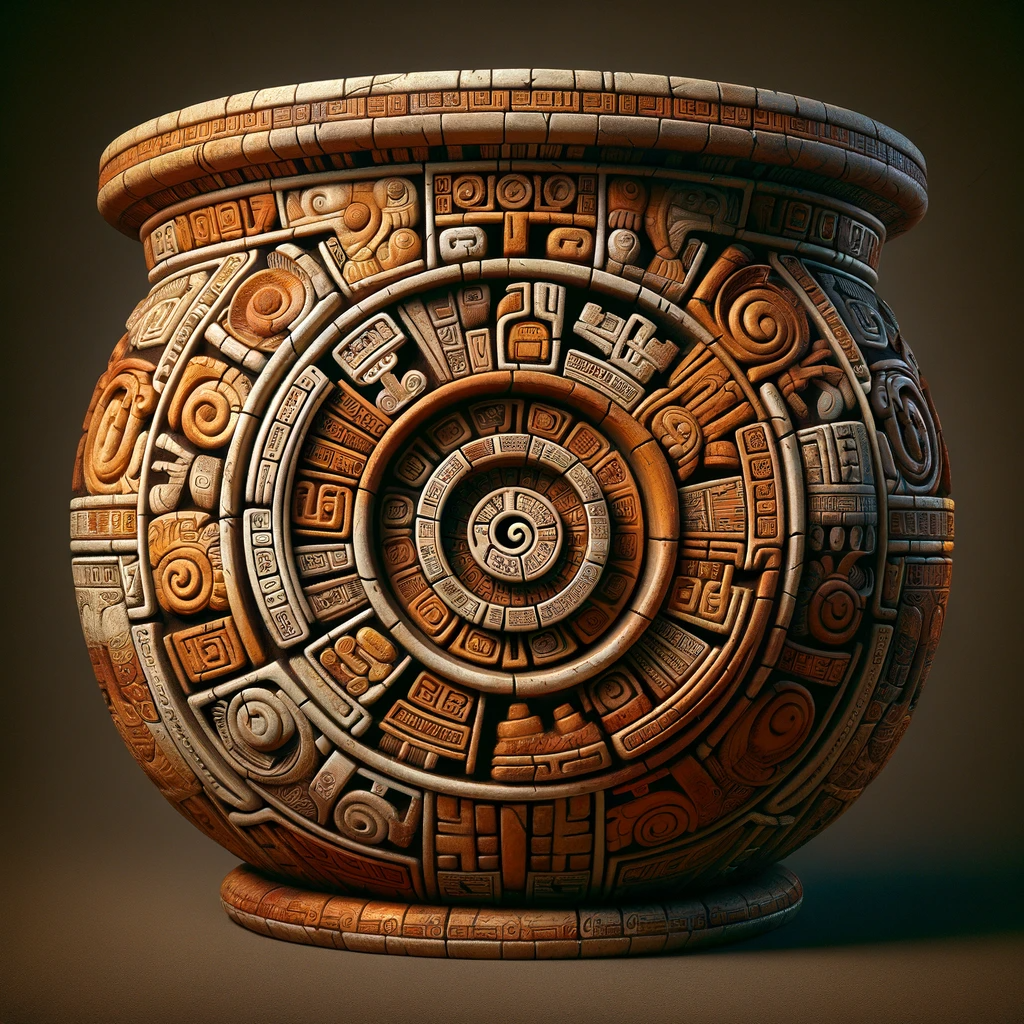
Beyond symbolic meaning, spirals actively facilitate spiritual development through dedicated practices, movement rituals and sacred architecture.
Spiral Dance
Sacred spiral dances occur all over the world, from Sufi whirling dervishes to Native American SUN Dance rituals. The spinning nature of these dances creates an inward vortex, believed to open energy channels and portals. This links the physical and spiritual dimensions into direct experience of the numinous.
Dancers may enter trance states visioning beyond physical limits and embodied ego. As they spiral outward, arms cast off attachments and illusions into the periphery leaving core essence to channel divine consciousness. Here, many report profound healing, guidance and intuitive openings.
Labyrinth Walking
Labyrinths come in all shapes though the classical 7 ringed circuit doubles back around reflecting the in-and-out coil shape. Uni-cursal, this single spiraling path has only one entry point with no dead ends. As there are no left-right decisions to make, one can relax fully into itsContain intricate hieroglyphs and illustrations. twisting route Circling into its center and back out again.
Walking or tracing finger labyrinths focuses awareness dropping mental chatter to access wisdom within. Rebalancing right and left brain hemispheres it arrives at centered insight. Release and renewal also ripple outward as we retrace our way into the world.
Spirals in Yoga
As yoga intertwines physical postures with breathwork and meditation, many key asanas integrate the shape of spirals. These help unlock energy knots and stimulate core vitality points through sustained twisting motions.
Seated and standing twists compress internal organs, activating digestive processes while torsion effects leave practitioners feeling mentally realigned. Spirals permeate movement sequences through flowing Dances of Shiva Nataraj mudras. Ancient yogic texts extol curling the tongue back to stimulate key energy channels too.
Whether through advanced contortion tricks or simple shoulder rolls, participants tap into the spiral’s innate powers of circulation and transformation.
Spirals in Sacred Sites
Many ancient temples and sites of mythic significance integrate multiple levels of spiral symbology into their structure and layout. The tower of minarets in oriental mosque architecture echoes ascending coils leading prayers heavenward. Dome ceilings similarly draw eyes and energy upward in recursive room layouts. Crypts below churches replay this architecture where initiates of the Greek Eleusinian mysteries once wound downward through ritual passages of spiral shaped halls, before resurrecting into the light.
The temple complex of Angkor Wat in Cambodia notoriously channels water hydraulics through its foundations to energize the elaborate bas reliefs of divine mythology gracing its stacked terraces and enclosures. This hydraulic energy compounds with intricately carved depictions of mythic tales, cosmology, cycling seasons, and levels of reality all in the shape of mandalic coils.
Many new era eco villages organize homes and community structures like plexuses of a grand central spiral with waterways and green spaces woven throughout. This sacred geometry intentionally connects residents to cosmic forces supporting peaceful collaboration and sustainable living.
Spiral Gardens
Whether private backyard nooks or grand palace grounds, fertile gardens also manifest this spiral symbology. Circular planting beds unfurl ever wider rings or elliptically rein back towards a stable core in harmonic proportions. This mirrors nature's innate blueprint for organic expansion encoded too at microscopic scales within the spiral sequencing of DNA itself.
Meandering garden pathways encourage leisurely contemplation over long hours. Each stride traces the subtle turning inwards and back out again found along the soul’s journey through material realms. Graceful willow trees bow with curiosity towards occulted inner worlds as lively sprouts ever reach for the light.
Spirals in Visionary and Shamanic Journeys
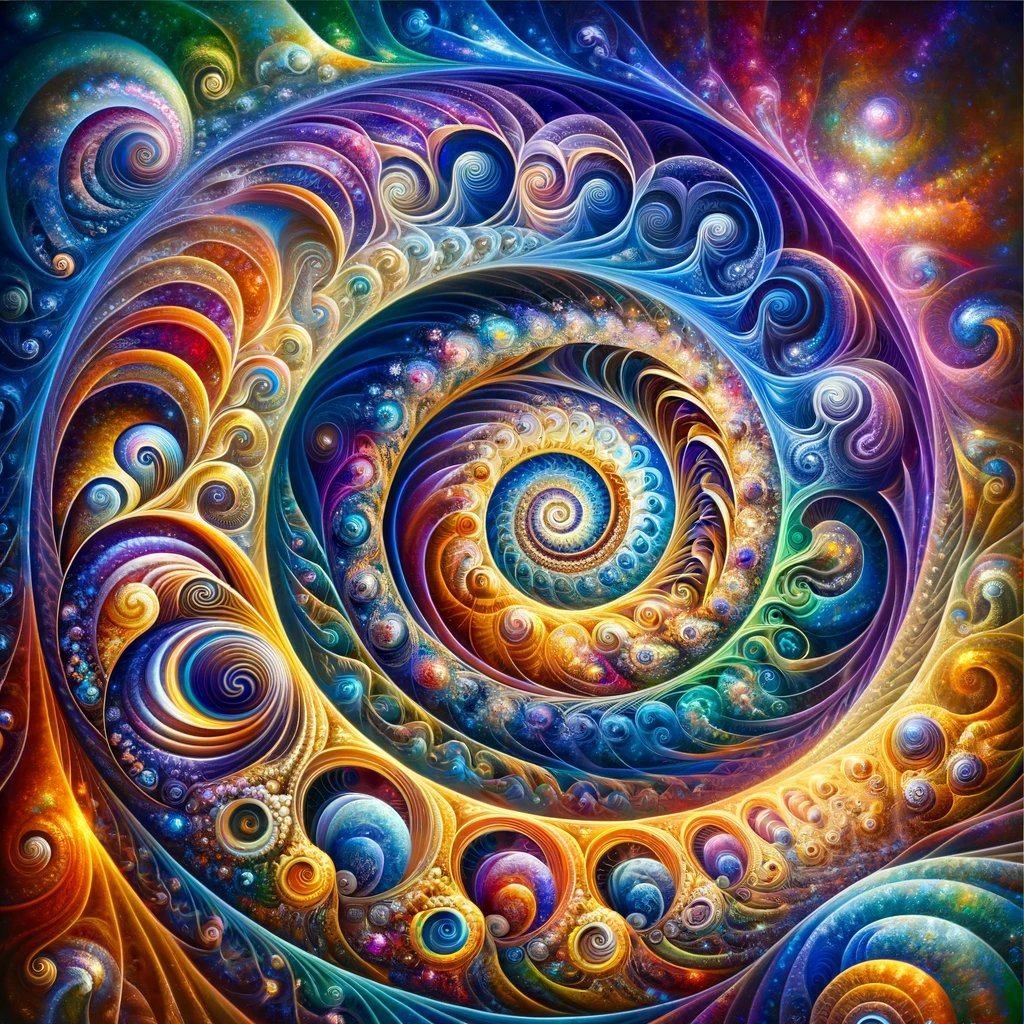
Seekers on visionary quests recount profound sojourns through cosmic worm-holes or skrying magical mirror portals into spirit worlds. Descriptions often include being pulled by powerful magnetic forces through swirling vortices of iridescent fractal spirals.
Likewise, traditional shamanic drum journeys summon winged and animal spirit allies to assist healing. Drumming frequencies key unusual states where heavy physicality transmutes into ultra-light pure energy bodies effortlessly traversing dimensional curves.
Through these rivulets in the fabric of time and space, universal secrets and profoundly personal revelations appear. Integrating these back into waking life allows us to renew perception and play more active, intentional roles in our destiny.
Spirals as Portals and Stairways
As a symbol of sacred centers linked across worlds, the coil’s central womb opens onto the infinite like pearls strung along Indra’s lustrous web. So too the ancient Norse guardian goddess Frigga spun secrets of fate, weaving with sky ropes that only spirit could ascend. And legendary wizard Merlin whirled through multi-dimensions coiling mystical paths from inner to outer perceptible worlds.
Whether mythic imaginal legends or modern magical practice, cosmic inter-connectivity shimmers on the edge of perception briefly illuminated by spiral after spiral blooming. When we gaze into these ephemeral spirals rippling through art, architecture and imagination itself, they rivet attention through timeless fascination connecting us directly with Mystery.
Frequently Asked Questions About Spirals in Spirituality
Here are answers to some common questions regarding the fascinating symbolic meanings and uses of spirals in spiritual contexts:
Q: Are there different types of spirals with specific meanings?
- Spiral variations hold specialized meanings, including:
- Clockwise vs Counterclockwise
- Ascending vs Descending
- Single Spiral vs Double/Triple/Concentric Spirals
- Equiangular Spiral (Logged) vs Archimedean Spiral
- Golden Ratio Phi Spiral based on Fibonacci Progression
Q: Do spirals always have positive symbolism?
- Spirals are overwhelmingly seen as constructive, healing shapes. But a descending/reverse-coiled spiral can represent detrimental energy drains when misused or propagated unconsciously. Certain occult practices take advantage of this. Those with trauma can project unwanted meanings onto spiral symbology too.
Q: What does the triskele or triple spiral represent?
- The triskele comprises three spirals radiating outwards, found on ancient Celtic structures representing the triple realms interwoven - water, earth and sky worlds unified.. It also denotes cycles of life-death-rebirth and transcendence of the soul.
How was the spiral used in ancient goddess worship?
- The spiral symbol was closely associated with fertility and goddess worship in many ancient cultures including Minoan Snake Goddess temples. Spiral motifs adorned goddess statues, ritual objects and sacred sites.
- Spirals represented the life-giving and nurturing power of divine feminine creative energies as well as cyclical renewal through the seasons, lunar cycles and reproductive cycles.
- Meandering spirals symbolized the circular, rippling emergence of life out of primordial waters, with the goddess at the generative center. Spirals in dual or triple goddess motifs expressed the phases of the Triple Goddess - Maiden, Mother and Crone.
- Priestesses danced spiraling labyrinthine rituals to invoke the goddess, achieve altered trance states and channel divination. Spirals linked the worlds, opening portals to harness and celebrate her regenerative powers.
Q: What meanings are associated with spiral shell symbolism?
- Found in cultures worldwide, spiral shells symbolize fertility, birth and the origin of life emerging from water's creative cradle.
- Protection, magical power and connections to lunar-water deities link feminine lifegiving properties to spiral shells.
- In myths, goddess figures like Lakshmi, Yemaya, Aphrodite were born from spiral shells. They represent the vulva and female reproductive energies.
- Spirals echo life's cyclical, recurring passage through death and rebirth across lifetimes.
- Shell spirals still hold ceremonial significance in rituals - Shango altars, Tibetan dungchen horns, goddesses' sacred items and more.
Q: Did spiral symbols play a role in ancient astronomy?
- Many archaic solar symbols depicted the Sun's spiraling path, like the ancient Egyptian Sun disc Ra and the Celtic Sun Wheel.
- Spirals mapped planetary movements and changing seasonal cycles - the Cretan Spiral Fresco is considered one of the world's oldest star charts.
- Megalithic sites from Stonehenge to Chichen Itza integrate solar and stellar alignments with spirals underscoring the cosmos' grand cycles.
- Mayans meticulously tracked the spiral transit of planets and stellar phenomena across intricately coded Sky Calendar counts.
Q: How are crop circle spirals interpreted?
- The enigmatic crop circles featuring elaborate spirals and fractal forms contain occult sacred geometry, sparking intense interest.
- While some crop circles are confirmed hoaxes, a percentage defy scientific explanation - interpreted by believers as cosmic portents or communications.
- Intricate multi-strand DNA models, complex numerological ratios, tetrahedral shapes and 3D sphere packings buried in crop spiral forms hint at profound arcane meaning.
- New Age theorists consider crop circles with spiral shapes to be star maps, energy portals/vortex generators, harmonic resonance chambers or even alien scripts once decoded.
